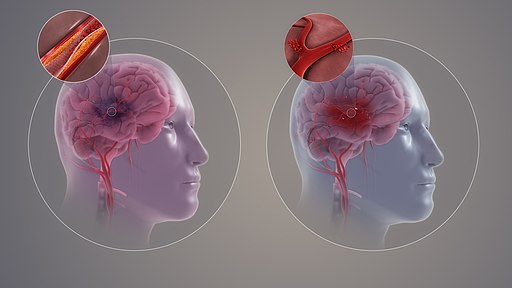The number of people evaluated for signs of stroke at the US hospitals has dropped by nearly 40 per cent during the COVID-19 pandemic, finds a study led by Indian-origin researchers.
The researchers from Washington University School of Medicine in St Louis analysed stroke evaluations at more than 800 hospitals across 49 states and the District of Columbia. The findings, published in the New England Journal of Medicine, are a troubling indication that many people who experience strokes may not be seeking potentially life-saving medical care.
Patients arrive at hospitals after a considerable delay
"Our stroke team has maintained the full capacity to provide emergency stroke treatment at all times, even during the height of the pandemic," said study lead author Akash Kansagra, Assistant Professor at Washington University. "Nevertheless, we have seen a smaller number of stroke patients coming to the hospital and some patients arriving at the hospital after a considerable delay," Kansagra added.
Nearly 800,000 people in the US experience a stroke every year. It is the fifth leading cause of death and the leading cause of long-term disability. Worried by the low numbers of stroke patients being evaluated at Barnes-Jewish Hospital and hearing similar reports from colleagues at other institutions, Kansagra - along with co-authors Manu Goyal, and statistician Scott Hamilton - set out to determine how pervasive the problem was.

When patients arrive at a hospital and are showing signs of a stroke, they often get a brain scan so doctors can identify what kind of stroke has occurred and choose the most effective treatment. Many hospitals, including Barnes-Jewish Hospital, use software known as RAPID to analyse such brain scans.
Software reveals further
For the findings, the research team assessed how often the software was used in February, before the pandemic, and during a two-week period from March 26 to April 8, when much of the country was under shelter-in-place orders.
In total, the software was used for 231,753 patients at 856 hospitals representing the district of Columbia and all 50 states except New Hampshire. During February, the software was used for an average of 1.18 patients per day per hospital. During the pandemic period, software use per hospital averaged 0.72 patients per day, a drop of 39 per cent.
Decline in seeking care driven by fear
According to the study, it is not limited to just hospitals in urban settings or rural communities, small hospitals or large hospitals. It is not just the old or the young or the people with minor strokes who aren't showing up. Even patients with really severe strokes are seeking care at reduced rates. "I suspect we are witnessing a combination of patients being reluctant to seek care out of fear that they might contract COVID-19, and the effects of social distancing," Kansagra said.
Even during a pandemic, it is critically important for people who may be experiencing a stroke to receive care immediately, Kansagra said. The risk of delaying care for a stroke is much greater than the risk of contracting COVID-19, the researchers noted.









